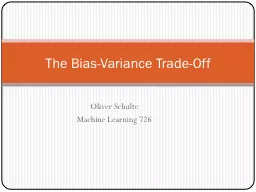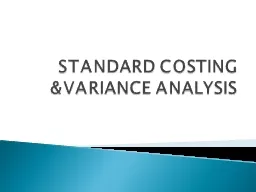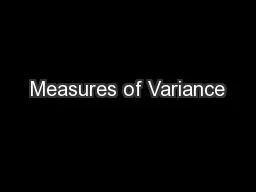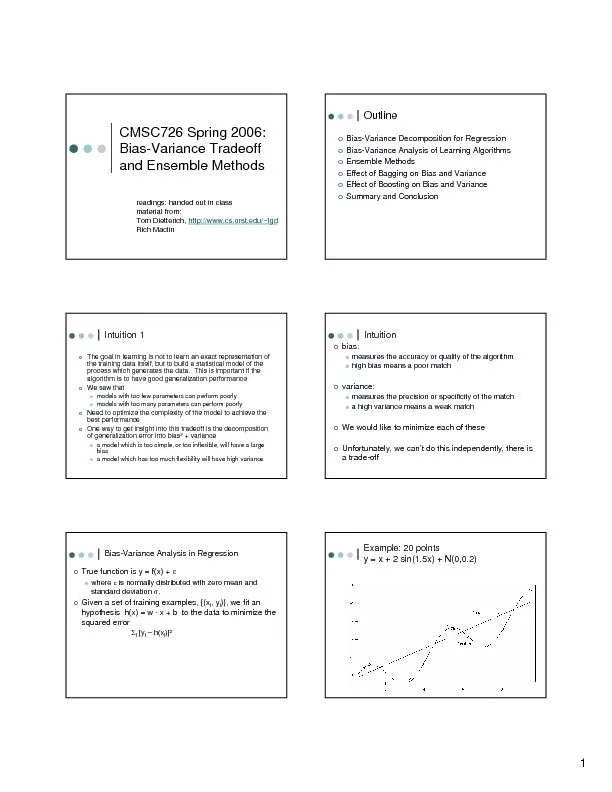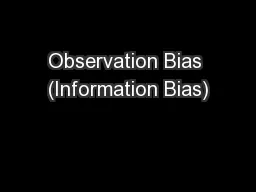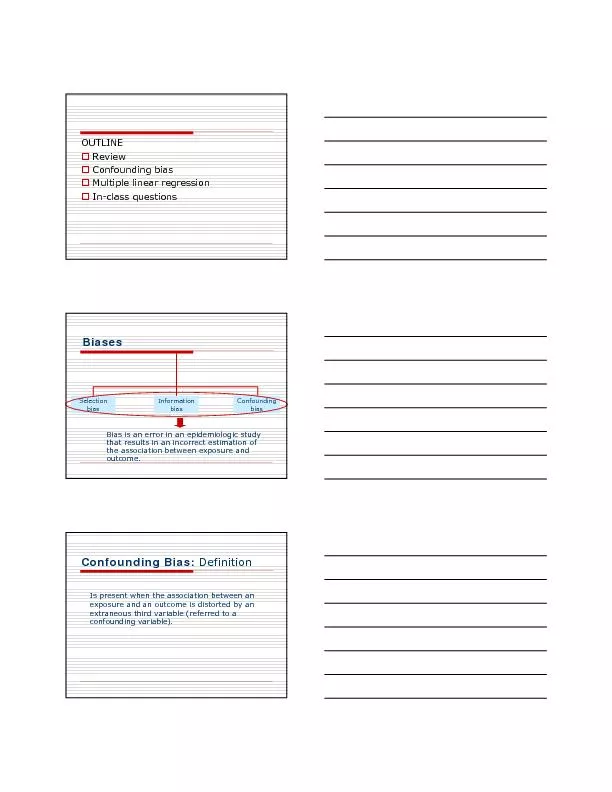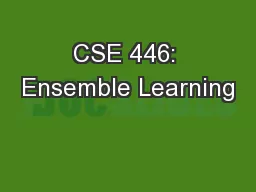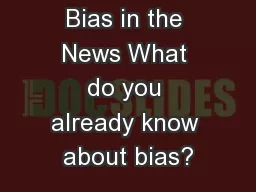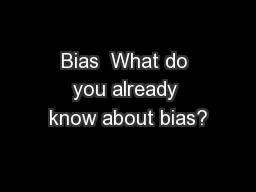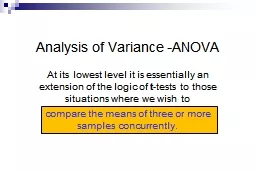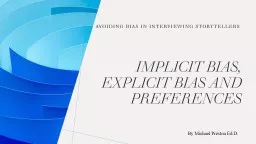PPT-The Bias-Variance Trade-Off
Author : pamella-moone | Published Date : 2017-08-21
Oliver Schulte Machine Learning 726 Estimating Generalization Error Presentation Title At Venue The basic problem Once Ive built a classifier how accurate will it
Presentation Embed Code
Download Presentation
Download Presentation The PPT/PDF document "The Bias-Variance Trade-Off" is the property of its rightful owner. Permission is granted to download and print the materials on this website for personal, non-commercial use only, and to display it on your personal computer provided you do not modify the materials and that you retain all copyright notices contained in the materials. By downloading content from our website, you accept the terms of this agreement.
The Bias-Variance Trade-Off: Transcript
Download Rules Of Document
"The Bias-Variance Trade-Off"The content belongs to its owner. You may download and print it for personal use, without modification, and keep all copyright notices. By downloading, you agree to these terms.
Related Documents

